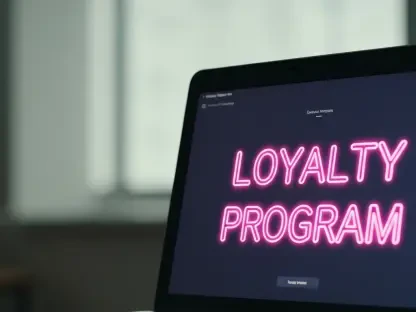In today’s fast-paced business landscape, where customer satisfaction often determines a company’s success, an often-overlooked factor silently undermines even the most sophisticated strategies: employee burnout. This state of emotional, mental, and physical exhaustion, driven by relentless stress, doesn’t just affect the individual employee—it reverberates through every customer interaction, eroding trust and loyalty. Picture a retail associate, drained from long hours and mounting pressure, unable to muster a genuine smile or thoughtful solution for a frustrated shopper. That single moment can transform a potential repeat customer into a lost opportunity. Burnout is not merely a personal struggle; it’s a strategic risk that threatens the very foundation of customer experience (CX). This article delves into the intricate connection between employee well-being and customer satisfaction, revealing how unchecked burnout can damage brand reputation and profitability. It’s a pressing issue that demands attention from business leaders across industries.
The Hidden Cost of Burnout on Customer Engagement
Burnout strips employees of the emotional reserves necessary to forge meaningful connections with customers, a critical component of exceptional service. When staff are overwhelmed by chronic stress, their capacity for empathy and patience diminishes, turning routine interactions into mechanical exchanges devoid of warmth. Research from Gallup underscores the severity of this issue, revealing that only 21% of employees globally are truly engaged at work. This widespread disengagement directly impacts the quality of customer interactions, as exhausted employees struggle to meet expectations for personalized care. Even with advanced technology or well-designed loyalty programs in place, the absence of genuine human connection often leaves customers feeling undervalued. The result is a weakened bond between the business and its clientele, which can lead to declining satisfaction scores and negative word-of-mouth that spreads faster than ever in the digital age.
Beyond emotional disconnection, burnout fuels high turnover rates, which further disrupt the continuity of customer relationships. When employees leave due to exhaustion, businesses face the dual burden of losing experienced staff and onboarding replacements who lack familiarity with customer histories or preferences. A study by Kronos and Future Workplace found that 95% of HR leaders identify burnout as a primary driver of retention challenges, a problem that comes with steep financial costs for recruitment and training. For customers, this turnover translates to inconsistent service—having to explain their needs repeatedly to new faces can breed frustration and a sense of being unimportant. Over time, this erodes trust, as clients seek out competitors who offer more stable, reliable interactions. The hidden cost of burnout, therefore, extends far beyond internal metrics, directly influencing how customers perceive and engage with a brand.
Burnout’s Stifling Effect on Innovation and Service Quality
Another profound impact of burnout is its ability to suppress the creativity and problem-solving skills that are vital for enhancing customer journeys. Employees grappling with mental and physical exhaustion often lack the energy to think outside the box or identify subtle pain points in the customer experience. This stagnation prevents businesses from evolving their offerings or personalizing services in ways that could set them apart in crowded markets. When a workforce is burned out, the spark of innovation dims, leaving companies reliant on outdated processes or generic solutions that fail to impress. Customers, in turn, notice this lack of ingenuity, whether it’s through uninspired responses to inquiries or missed opportunities to anticipate their needs. The competitive edge that comes from fresh ideas slips away, placing organizations at a disadvantage.
Additionally, the absence of innovation driven by burnout creates a feedback loop that further harms service quality. Employees who are too drained to contribute meaningfully often settle into a bare-minimum mindset, focusing solely on completing tasks rather than exceeding expectations. This approach might keep operations running, but it rarely results in the kind of memorable experiences that foster customer loyalty. Without the drive to go above and beyond, staff miss chances to turn neutral interactions into positive ones, allowing competitors to capture dissatisfied clients. Businesses suffer not only from immediate revenue losses but also from a tarnished reputation as stories of mediocre service spread. Addressing burnout, therefore, becomes essential not just for employee health but for maintaining a dynamic, customer-focused environment that thrives on continuous improvement and adaptability.
Leadership Strategies to Mitigate Burnout and Enhance CX
Leadership plays a pivotal role in breaking the cycle of burnout, much like a conductor guiding an orchestra to ensure every note harmonizes perfectly. If even one team member is disengaged due to exhaustion, the entire performance—akin to a company’s customer experience—can falter. Business leaders must treat employee well-being as a core strategic priority rather than a secondary concern. A compelling example comes from companies like Starbucks, which have invested heavily in employee benefits and mental health resources. By ensuring staff feel supported through initiatives like tuition reimbursement and accessible counseling, such organizations cultivate a workforce that is motivated to deliver exceptional service. This approach demonstrates that prioritizing employee experience (EX) directly enhances CX, creating a positive ripple effect that benefits both staff and customers.
To combat burnout effectively, leaders must adopt actionable measures that foster a sustainable work culture. Conducting regular surveys to assess stress levels provides valuable insights into employee challenges, while open conversations can uncover hidden issues before they escalate. Implementing practices like flexible scheduling or designated no-meeting days helps reduce pressure, allowing staff to recharge. Furthermore, redefining productivity to emphasize outcomes over hours worked can shift the focus to meaningful results rather than constant busyness. Training managers to recognize early signs of burnout and equipping them with tools to support their teams is equally crucial. By tying EX metrics to CX outcomes, executives can quantify the impact of a healthier workforce on customer loyalty, building a compelling case for sustained investment in well-being initiatives that protect both employees and the bottom line.
Building a Future Where EX and CX Thrive Together
Reflecting on the challenges posed by employee burnout, it’s evident that businesses in the past often overlooked the profound link between staff well-being and customer satisfaction. Leaders who tackled this issue head-on, however, saw remarkable improvements in both employee morale and customer loyalty. By implementing targeted strategies, such as regular well-being assessments and innovative workload management, many organizations transformed their workplace cultures into supportive environments. These efforts paid off with stronger customer relationships and enhanced brand reputation, proving that a focus on employee health was not just ethical but also financially sound. The lessons learned from these initiatives remain a guiding light for current and future endeavors.
Looking ahead, the path to sustainable success lies in embedding employee well-being into the core of business strategy. Companies should consider integrating advanced tools to monitor burnout risks while fostering open dialogue across all levels of the organization. Exploring partnerships with mental health professionals or adopting technology to streamline repetitive tasks can further alleviate employee stress. As the business landscape evolves, linking employee experience metrics with customer feedback will provide actionable data to refine approaches continuously. By championing these forward-thinking steps, organizations can create a virtuous cycle where empowered employees drive exceptional customer experiences, ensuring long-term growth and resilience in competitive markets.









